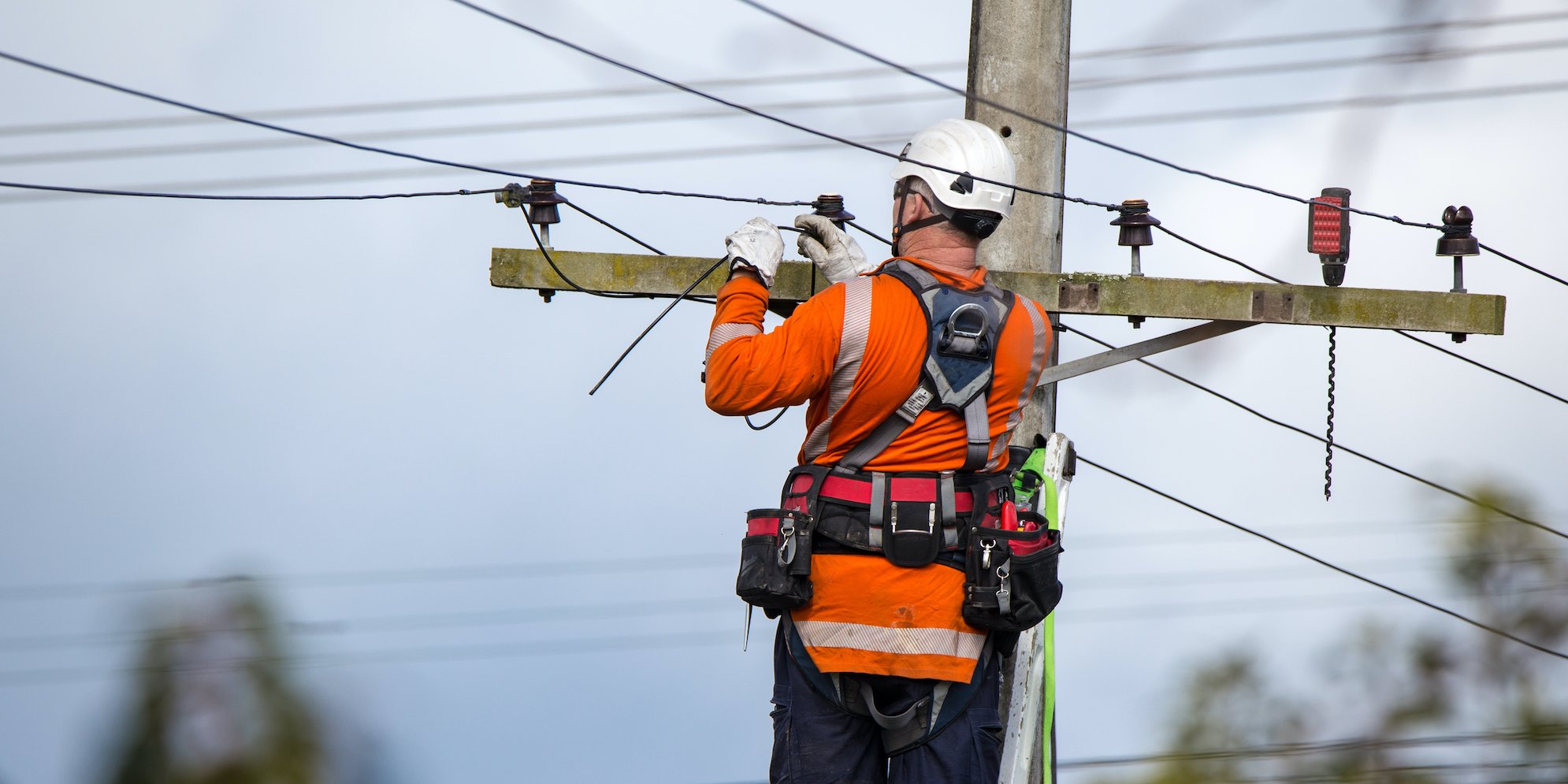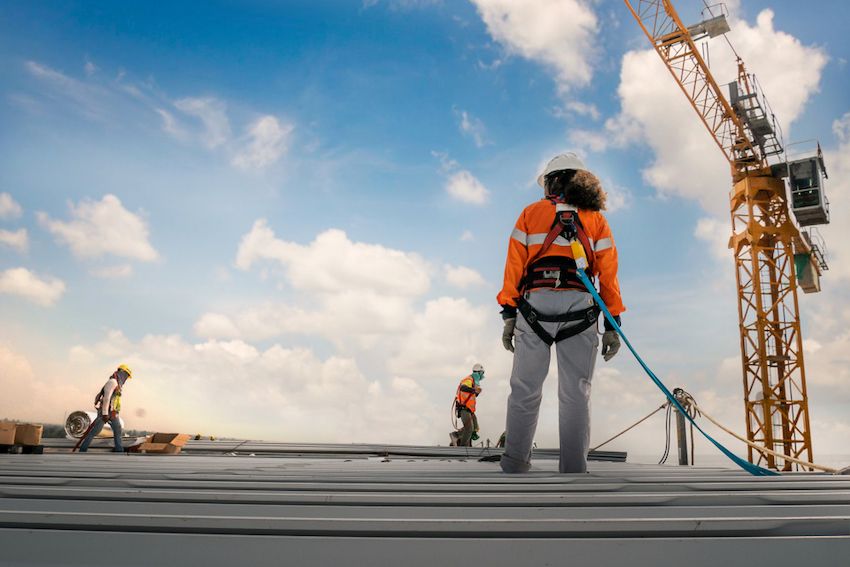Utility and construction worksites pose serious dangers in the best of conditions. Winter weather adds more hazards such as slippery surfaces, strong winds, and cold. New workers who are not used to working in the cold as well as workers returning to the job after spending time away are particularly susceptible to workplace injuries in the winter months.
It’s not possible to control the weather, but utility and construction companies can control how they prepare for it. Read on for a few tips to prevent workplace accidents and injuries and fatalities in workplaces affected by winter weather.
How to prevent workplace accidents and injuries in winter
Suspend non-emergency work in hazardous weather
Utility and construction companies should suspend all non-emergency work when the weather is hazardous. Hazardous winter weather events are blizzards, ice storms, and winter storms (heavy sleet, snow, or ice; blowing snow; or a combination of events). This includes indoor work, as workers could be injured or killed while commuting to the worksite as a result of these conditions.
Stay informed of weather conditions by tuning in to the National Oceanic and Atmospheric Administration (NOAA) Weather Radio. This is a nationwide network of radio stations that broadcasts continuous weather information from the nearest National Weather Service office.
Read: Worker Safety New Year's Resolutions For Construction and Utility Companies
Follow work and warm-up guidelines
Some outdoor work can’t stop in cold weather. To prevent a workplace injury in these instances, utility and construction companies should follow work and warm-up guidelines set forth by the American Conference of Governmental Industrial Hygienists (ACGIH).
ACGIH work and warm-up guidelines provide recommendations on the maximum work period and the number of breaks workers should take in a four-hour shift based on air temperature and wind speed. For example, if the temperature is between 25 and 29 degrees Fahrenheit and the wind speed is 10 miles per hour, workers should work for a maximum of 40 minutes at one time and should take a minimum of four 10-minute warm-up breaks.
To prioritize construction and utility worker safety while also maximizing work time in cold and windy conditions, schedule jobs that expose workers to the cold weather in the warmest part of the day, usually in the early afternoon. Additionally, use engineering controls such as radiant heaters and windscreens whenever possible.
Teach workers how to dress for cold weather
OSHA does not require employers to provide their workers with ordinary clothing used solely for protection from weather such as winter coats or jackets, gloves, parkas, rubber boots, or hats. However, effective worker safety risk management in winter conditions includes teaching workers how to dress properly for the cold.
See below for cold weather dress essentials:
- At least three layers of loose-fitting clothing: an inner layer of wool, silk, or synthetic (polypropylene) to keep moisture away from the body; a middle layer of wool or synthetic to provide insulation even when wet; and an insulated rain-resistant outer layer with some ventilation to protect from wind and rain and prevent overheating
- A hat that covers the head and ears
- Insulated, water-resistant gloves
- Insulated, waterproof boots with good rubber treads
- A knit mask that covers the face and mouth, if needed
Also know that, while not required, companies can choose to provide their workers with winter weather gear. This is possibly the most effective way to ensure workers are properly dressed for winter weather.
Train workers about cold stress
Cold stress is a condition where the body is unable to warm itself, sometimes leading to serious cold-related illnesses and injuries. The three types of cold stress are trench foot, frostbite, and hypothermia.
To prevent workplace injuries, utility and construction companies should teach their workers about cold stress. Trainings should cover:
- Environmental conditions that can lead to cold stress, including cold temperatures, high or cold wind, and dampness
- Non-conditional risk factors that contribute to cold stress such predisposing health conditions (hypertension, hypothyroidism, diabetes), poor physical conditioning, and exhaustion
- The types of cold stress, the symptoms of each type, and proper first aid
- How to select proper clothing for cold, wet, and windy conditions
Promote safe winter driving
Transportation incidents were the leading cause of fatal workplace accidents in 2019, accounting for approximately two out of five deaths, according to the Bureau of Labor Statistics’ National Census of Fatal Occupational Injuries in 2019 report. Utility and construction companies cannot control road conditions, but they can prevent workplace accidents by preparing their workers to drive safely in winter weather.
To do this, first ensure workers are properly licensed for all of the vehicles they may operate. If workers visit multiple worksites in a day, plan for extra drive time so they aren’t tempted to drive faster than is necessary.
Next, teach workers to recognize the hazards of winter weather driving and have them practice driving in winter weather conditions during the daylight. For example, you could hold a winter driving safety stand down where workers practice stopping vehicles skidding on ice in a controlled environment.
Utility and construction companies should also train their workers to conduct safety risk assessments of company vehicles. In other words, teach them how to inspect company vehicles to ensure all systems are working properly. Finally, equip all company vehicles with an emergency kit and ensure workers know what to do if they are ever stranded in a vehicle.
Prepare for slips, trips, and falls
Slipping on ice might seem like an inevitability in wintertime, but that doesn’t mean utility and construction companies should not do all they can to prevent falls.
To start, always clear snow and ice from walking surfaces and spread de-icer after snowfall or winter storms. Also train workers to wear boots or over-shoes with good rubber tread and to take short steps and walk at a slower pace in order to react quickly to changes in ground traction.
Construction and utility hazards increase in the winter months. To prevent workplace accidents that lead to injury or even death, construction and utility companies must call off work in dangerous winter conditions and follow best practices set forth by OSHA and other government agencies that are designed to keep workers safe.
For more on the topic of preventing workplace accidents, check out “3 Ways to Improve Utility Worker Safety."

